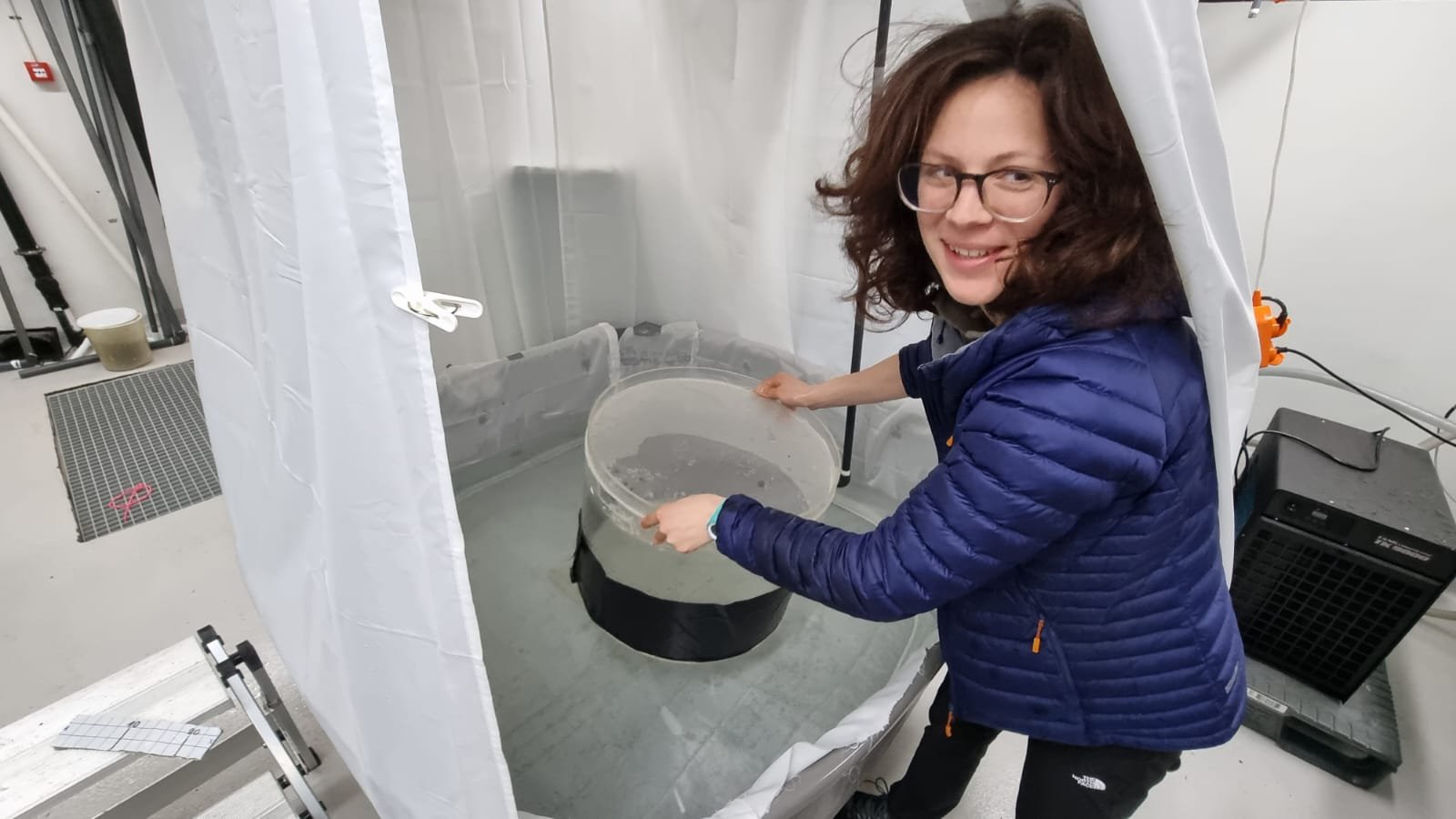Much of our work understanding the links between physiology and social behavior have taken place in the lab. While this allows us a high degree of control of environmental variables to clearly answer specific questions, the links between a fish’s actions in a tank and what it really does in the wild are not always clear. We were lucky enough to have the opportunity to travel to the Institute of Marine Research (IMR) in Flødevigen, Norway to work with Dr. Esben Oslen to study how the behavior of fish in the lab relates to their movement and social behavior in the wild.
At IMR, there is a unique outdoor pool with a rocky bottom that is feed with water directly from the ocean. Esben has raised Atlantic cod (Gadus morhua) in these large saltwater ponds, where they can swim about freely but are still relatively easy to capture. He has information about the genetic of each individual, their growth rates and the activity patterns of their parents. We will combine this information with the work we are doing to get a better snapshot of these fish’s lives.
When we arrived, we began catching the fish using fishing traps. We are able to identify individuals using “passive integrated transponder” (PIT) tags. It is the same technology that vets use to “microchip” our pets.
We brought the fish into the lab where we first measured their activity and social behavior. Activity is easy—we just put the fish in a tank and take a video of it swimming around. We always use video cameras that we set up above the tank because the fish are very sensitive to our presence. We will then take these videos back to Glasgow with us and using tracking software to figure out their exact movement pattern. Social behavior is also fairly straight forward. Just like the activity trials we record their behavior of a fish from above, but now there are four see through tubes, one in each corner of the tank. Two of them are empty, but two of them have fish in them. One with one fish and one with a group of 4 fish. We will just track the movements of the fish that is free to swim around the tank. Fish that spend more time next to the tube with fish in it are considered more social then fish that spend time in the center of the tank or next to the empty tubes.
In addition to their behavior we use an intermittent-flow respirometer to measure their metabolism. To do this we put each fish in their own individual tube and measure how fast they deplete the oxygen in the water. All night long there are alternating periods of measurement of oxygen and flushing of the system with clean oxygenated water, so the fish never experience any oxygen stress and we are able to get multiple measurements of oxygen depletion throughout the night. Because oxygen is the fuel for many metabolic processes, this is a good proxy of their metabolic rate. We are most interested in their baseline—the minimum amount of oxygen they need when they are relaxed, which is why we measure it at night. In order to further ensure that fish are relaxed, we don’t want them to be able to see each other so we tie little black sheets of plastic around the tubes to “tuck them in” every night.
We repeated all of these measures twice for each individual so we will be able to get an idea of how consistent they are. For example, we want to know if individuals that are more active during the first measure are also more active during the second measure.
After taking these measures we surgically implanted acoustic tags in the fish and rereleased them in the pond. A network of receivers in the pond will then triangulate the locations of our fish and allow us to track their movement relative to each other. We are excited to see whether fish that are the most active in the lab are also the most active in the wild. We are hoping to also answer questions relating to their social preference. For example, do fish swim with fish that are behaviorally and physiologically similar to them?
Our fish are currently in swimming away in the pond and the receivers are gathering information while we watch the videos we recorded in the lab. We are hoping to return in the summer to remeasure their behavior… and hopefully take some more dips in the sea ourselves!
- Daphne and Amelia








